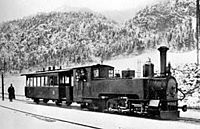Second Industrial Revolution

The second industrial revolution was a time period in the late 1800s and early 1900s when many new inventions and technologies changed the way that people worked and lived. During this time, electric power, telephone and telegraph lines, radio, and the gasoline engine were invented, which made it possible for people to communicate more easily and to transport goods and people more quickly than ever before. This revolution also brought about the invention of assembly lines, which allowed factories to produce goods in large numbers quickly and cheaply. For the first time, machinery and factories were used to mass-produce things like cars, trains, and planes, or to turn raw materials into finished goods. All of this meant that people had access to more goods, services, and communications than ever before. In addition, new factories, railroads, and other inventions created more jobs, which helped to reduce poverty and create economic growth.
Related topics others have asked about:
British Agricultural Revolution,
Capitalism in the nineteenth century,
Chemical Revolution,
Digital Revolution,
Economic history of France,
Economic history of Germany,
Economic history of Italy,
Economic history of Japan,
Economic history of the United Kingdom,
Economic history of the United States,
Fourth Industrial Revolution,
Green Revolution
